- Details
By Louie Stout
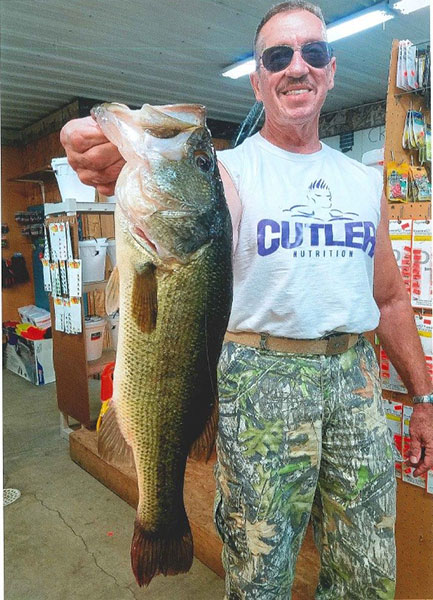 Mark Holbrook
Mark Holbrook
Mark Holbrook doesn’t fish bass tournaments or belong to any fishing club.
But the dude can catch big fish.
Just look at his success last year, when he won the Indiana DNR’s Largemouth Bass Fish of Year Division with a 26.50 incher. In fact, he had the second best entry as well, a 26 incher. Both were caught from Bruce Lake in Fulton County.
But that’s not the story here. Holbrook swears he’s caught bass bigger than the state record (14 pounds, 12 ounces, caught in southern Indiana in 1991).
“I was at a sport show and saw a (replica) mount of the state record,” he said. “I looked at that thing and said, ‘shoot, I’ve caught bass bigger than that’.”
In fact, he claims he lost one at the boat last season when the fish tangled in his anchor rope.
“That was the only time I cried during fishing,” joked the retired Winamac angler.
Big bass catches aside, what sets Holbrook apart from most bass fishermen is his willingness to share his secrets with anyone who will listen.
“When I watch guys in bass boats while I’m fishing, I just shake my head,” he said. “They aren’t fishing the way you have to fish to catch big ones. Believe me, that’s all I fish for - big ones.”
He figures he’s caught more than 2 dozen bass over 20 inches the past four years using the same system. And while Bruce Lake is his “home” lake, his approach has produced big fish in other lakes, too.
And not just bass.
“I caught five muskie on it while fishing for bass,” said Holbrook. “One of those I caught last year measured 45 inches.”
So what’s his secret?
Where he fishes is a big part of it. Like a lot of anglers, he fishes lily pads, but his approach is different.
“Most anglers cast lures along the edge,” he said. “My boat (12-foot Creek Boat) is a shallow draft so I get back into the pads and look for those openings – or holes – that are far inside the outside edge.”
Holbrook says that’s where the big fish live unmolested – until he comes along.
“Most people don’t want to make the effort to get back there where these fish live,” he insisted.
He positions his boat on top of the pads, casting to the edges around the openings. He fishes every inch of it.
“Those fish are lazy and will just sit there staring out into the opening waiting for a bluegill or some other unsuspecting creature to come along,” he described.
He believes his lure presentations are another key to his success. He has two 7-foot, medium heavy Johnny Morris spinning rods rigged with Okuma C-30 reels spooled with 20-pound braided line.
“Nothin’ fancy,” he added. “Those reels are only $50 each.”
The braid is attached to a foot-long steel leader which is snapped to the weedless hook in the worm.
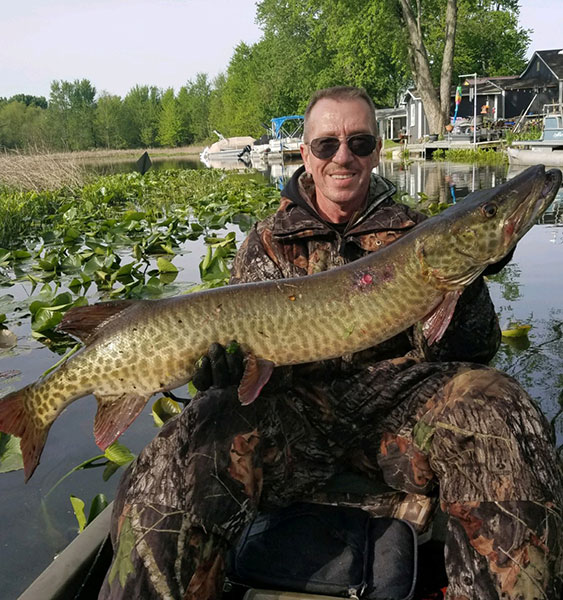 Mark Holbrook
Mark Holbrook
“Because of all the big pike and muskie I hook, I need that steel leader,” Holbrook explained.
Both rods are rigged differently although both are weightless and utilize a 3/0 weedless hook and a 10-inch soft plastic worm. His favorites are made by Big Bite or Mr. Twister in green pumpkin.
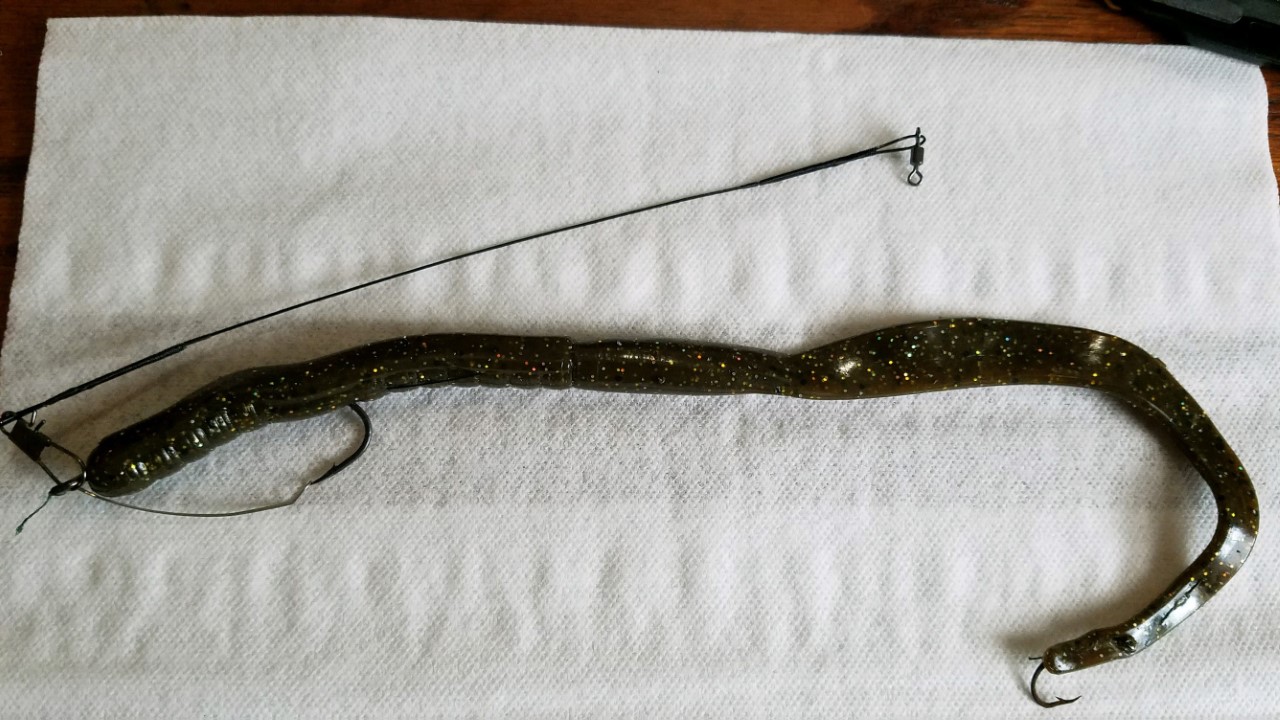 Holbrook's Worm Rig
Holbrook's Worm Rig
“I will work a traditionally rigged worm at first, but if I get a bite I will drop the rod and watch for the line to move,” he said. “If nothing happens after about 30 seconds and if I don’t feel anything, I will wind in and pick up the other rod.”
The second rod is rigged with the same worm, but it has a stinger hook in the tail, a rig he fashions before he heads to the lake.
“I sit in my recliner while watching TV and thread 50-pound fluorocarbon line through the center of worms and tie the end of the line to small walleye hooks I attach at the end of the worm’s tail,” he said. “I thread a weedless hook through the head of the worm and tie the front end of the leader to the eye of that hook. That’s the rig that caught both of my big bass and the big muskie.”
Holbrook says bass oftentimes grab just the tail of the worm. And because the fish are big, they often don’t move the line right away. He will lift gently on the rod to feel any pressure; if there is, he sets the hook.
He believes that jerking too soon or missing the strike on the hook-set can spook the fish and ruin your chances.
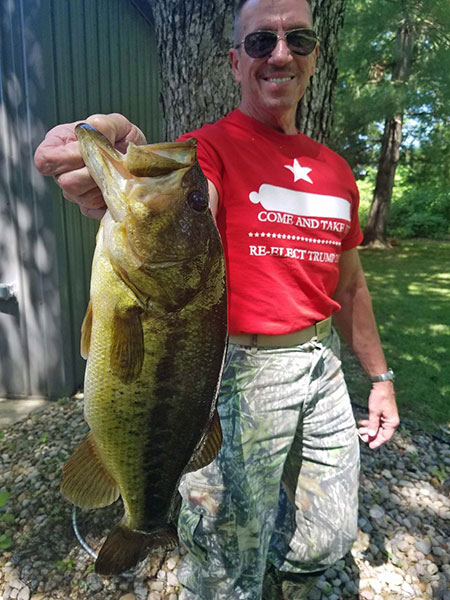 Mark Holbrook
Mark Holbrook
“With the stinger, I rarely miss,” he said.
Oddly enough, Holbrook never fishes far off shore.
“I honestly don’t know much about fishing out there, although I have friends who have depth finders and fish that way,” he said. “I’ve never had any reason to go out there.”
And given his successes, why should he?
- Details
By Louie Stout
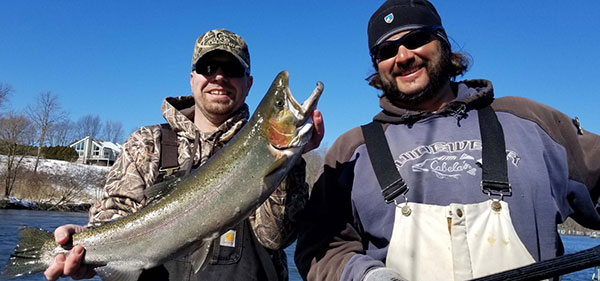 Anglers Salvage Cold Day on the St. Joseph River
Anglers Salvage Cold Day on the St. Joseph River
I knew it was going to be a tough day.
First, there was the issue of answering an alarm clock at 4:30 a.m.
Haven’t done that since last summer.
Then there was the outside thermometer that read 18 degrees. A check of the day’s forecast showed it wasn’t going to get much better than that.
But I had committed to friend Scott Crocker who had a ride on a St. Joseph River Charter Boat and wanted me to tag along.
Now, I’m not going to lie. Winter fishing for trout and salmon isn’t my thing. But the winter had been long and I spent most of it lounging in my recliner watching sports.
It was time to get outside.
We drove through darkness to Shamrock Park near Berrien Springs, Mich. where we would meet Captain Mike Frank of Dial-in Charters. Frank, who guides 130 days a year, was taking a busman’s holiday and invited us along.
- Details
By Louie Stout
This has been a winter to remember — or forget, depending upon your perspective.
It’s been one of the iffiest ice seasons we’ve had in a long time. Yet, the anglers who kept their boats out of storage have enjoyed an extended fishing season on the St. Joseph River.
And as we await spring, there’s hope it comes early and without the flood waters that occasionally temper those early season desires.
Nobody wants stable weather more than the river anglers who chase steelhead.
Lake Michigan Biologist Ben Dickinson says 210 fish moved upstream through the South Bend Ladder in January and another 439 in February through Thursday. And remember, those steelhead that moved in last fall — and didn’t get caught — are still there.
“We haven’t read the tapes recently because of the weather, but I would imagine several more fish have moved up since Feb. 10,” he said. “The gradual warmup in the forecast for early March should really jumpstart the spring steelhead run.”
The spring run also is weather dependent. The trout move up river to spawn and get active once the water temps steady at 39 degrees or above. The river was holding around 38 degrees late last week.
- Details
By Louie Stout
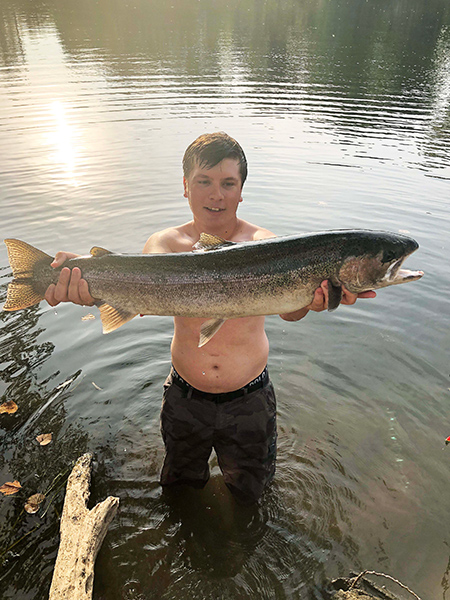 Granger Angler Takes a Dive for Big Steelhead
Granger Angler Takes a Dive for Big Steelhead
Northern Indiana waters produced several of the Indiana DNR 2019 Fish of the Year winners, but Chris Peabody’s catch might have been the most bizarre.
The 21-year-old Granger angler landed a 38-inch steelhead from the St. Joseph River downstream from the Central Park Dam on Sept. 20. It was the biggest steelhead reported in the DNR contest.
However, the fish didn’t come easily. Peabody had to dive into 40-some-degree water to retrieve the fish that tangled in logs after he hooked it.
On that day in September, Peabody was casting from shore with a 1/16-ounce black Jarhead Jig rigged behind an orange bead. It was fished under a float, allowing the tiny jig to dance with the current and stay off bottom.


